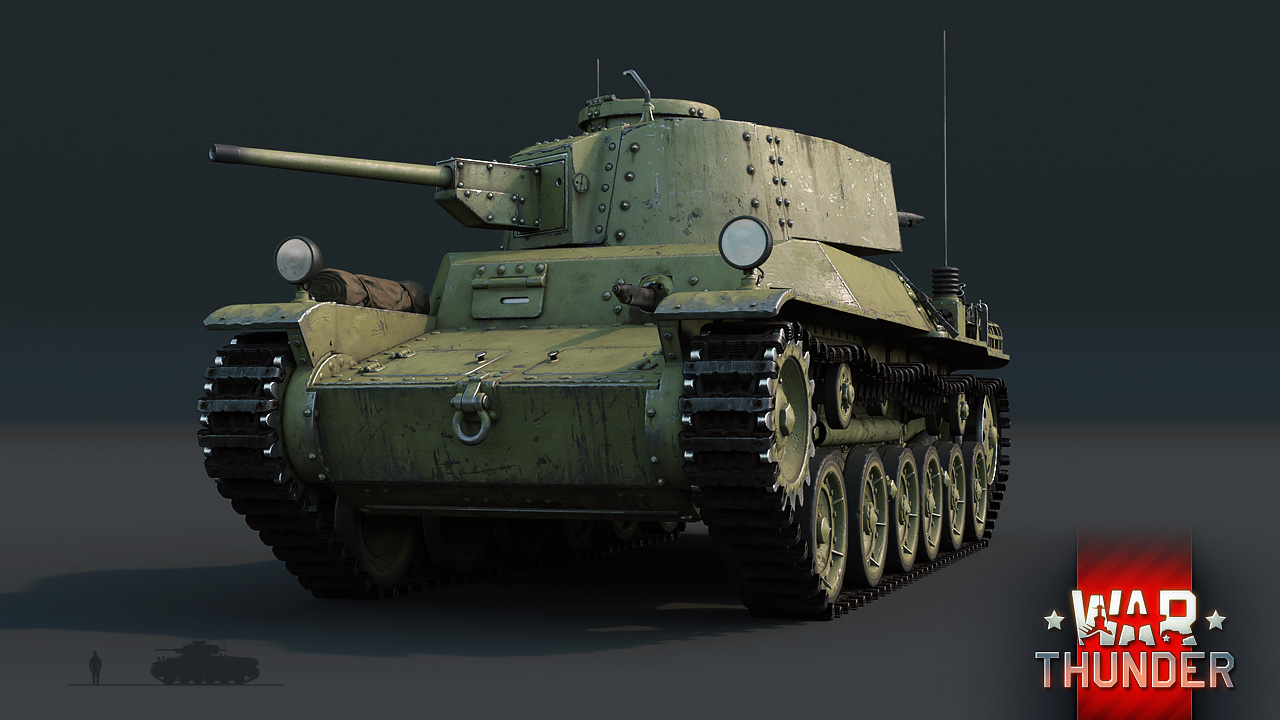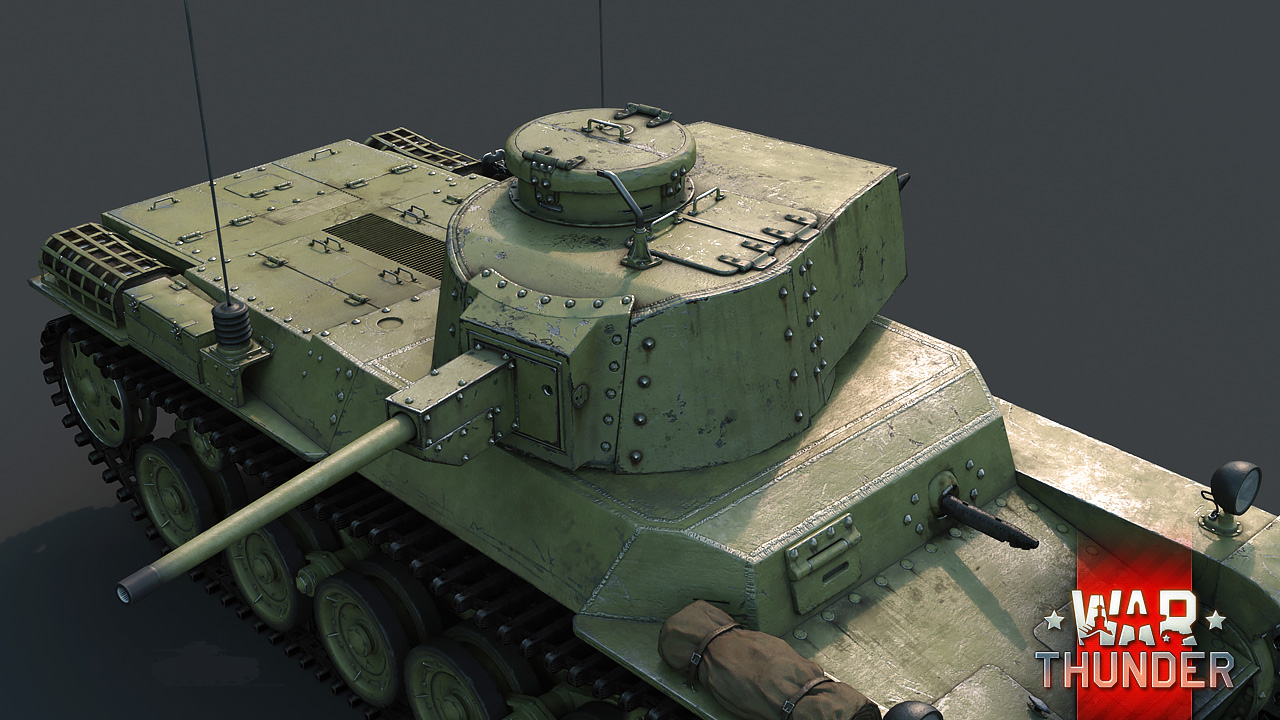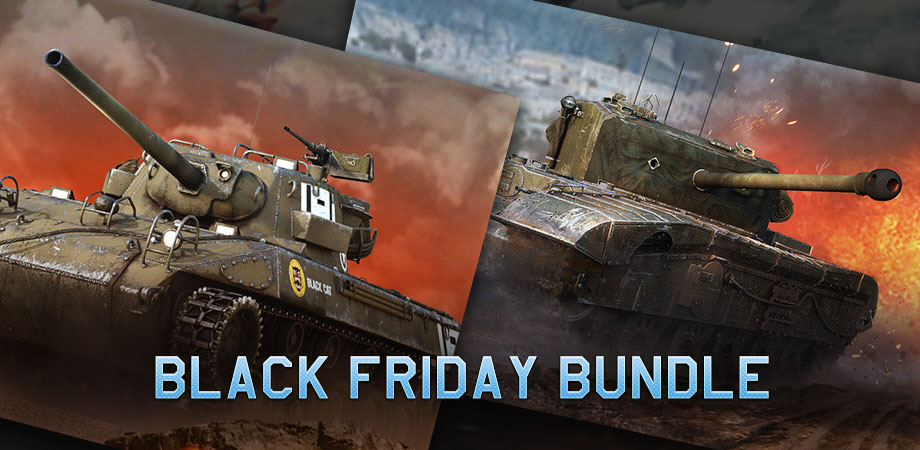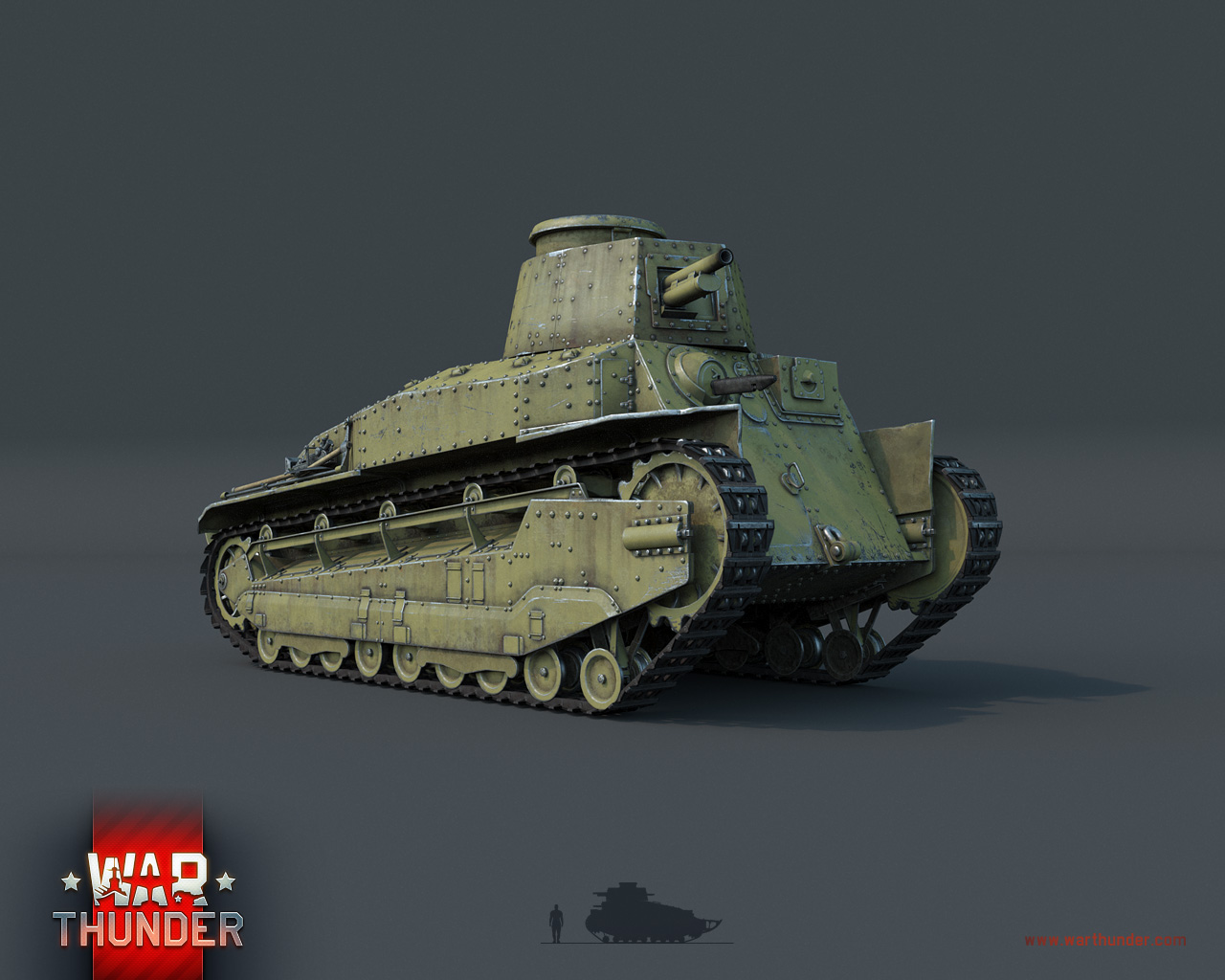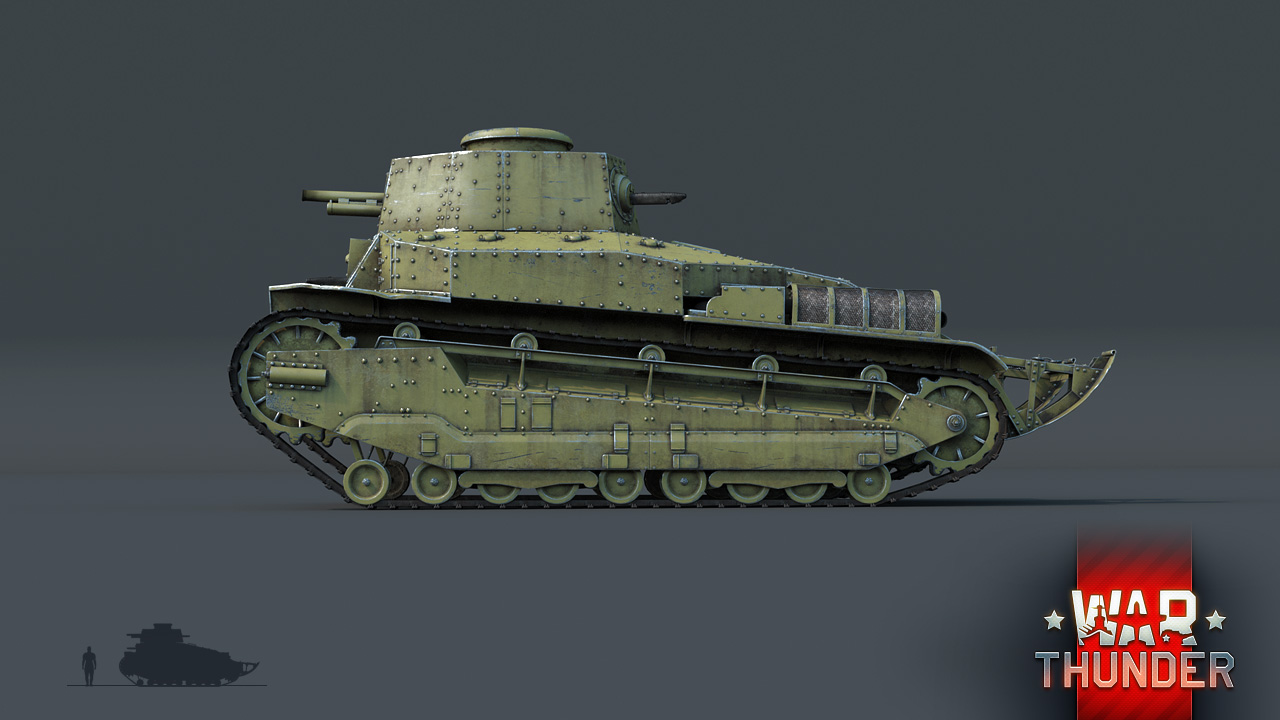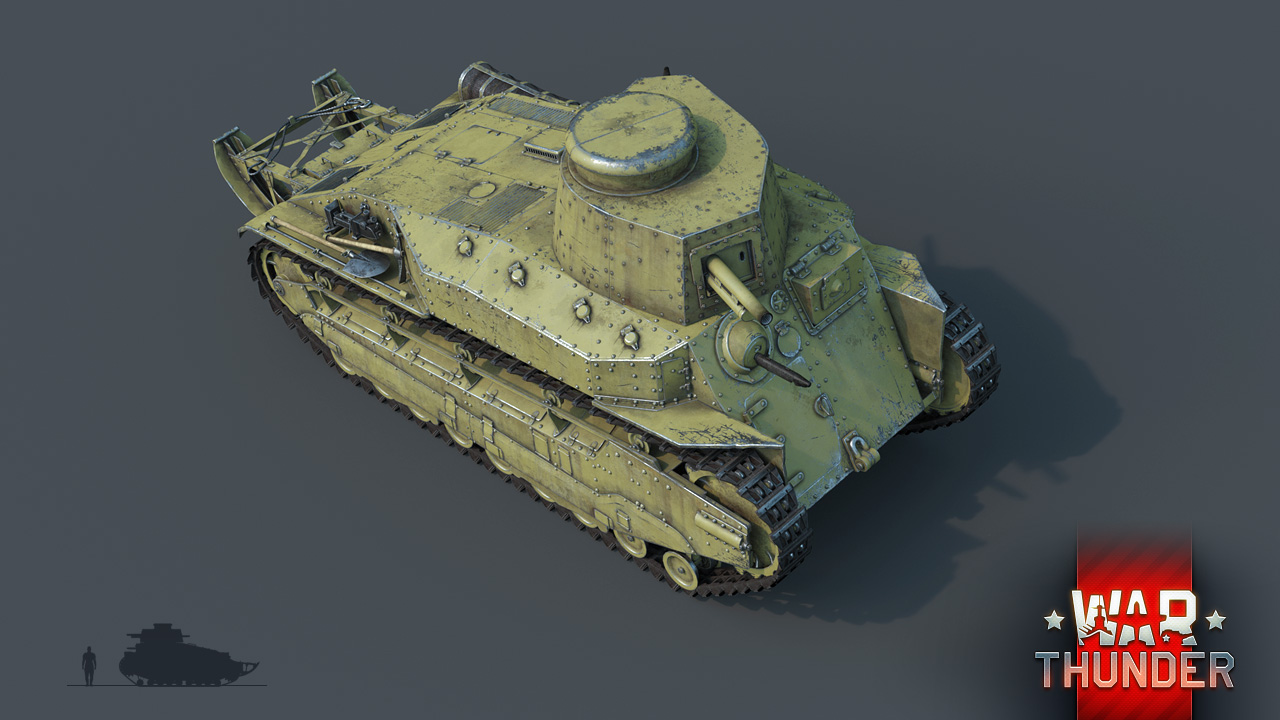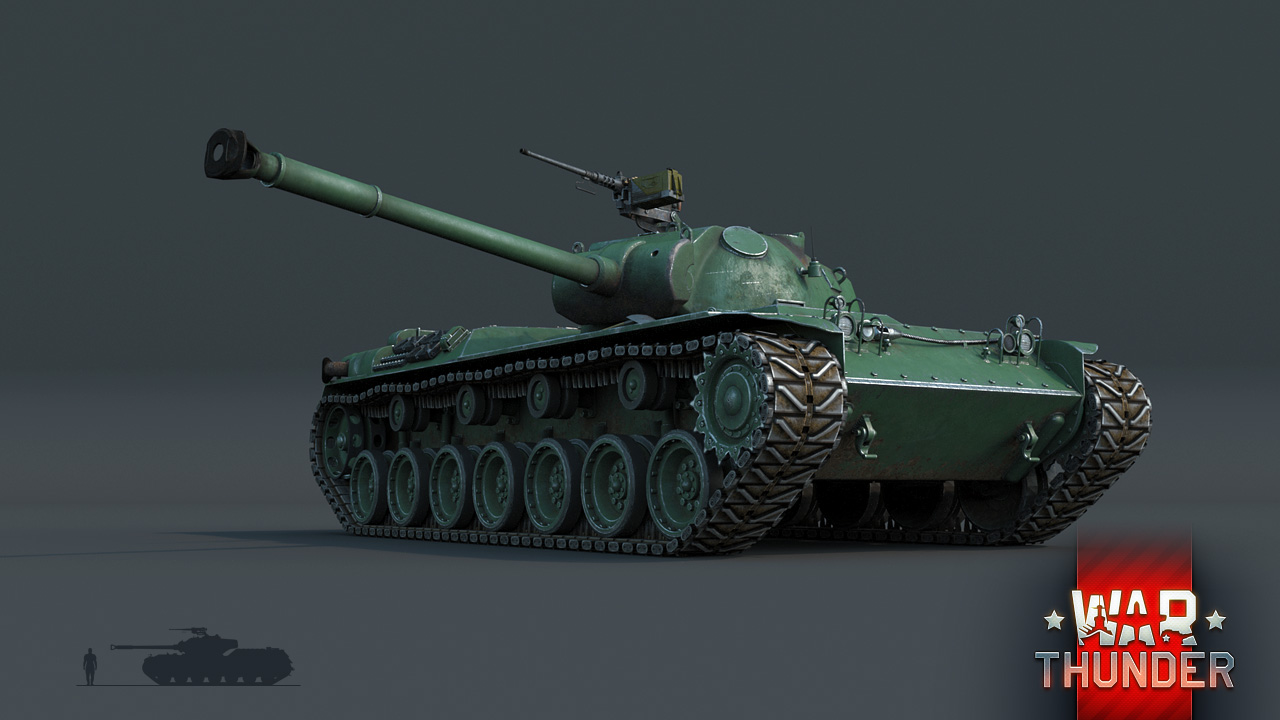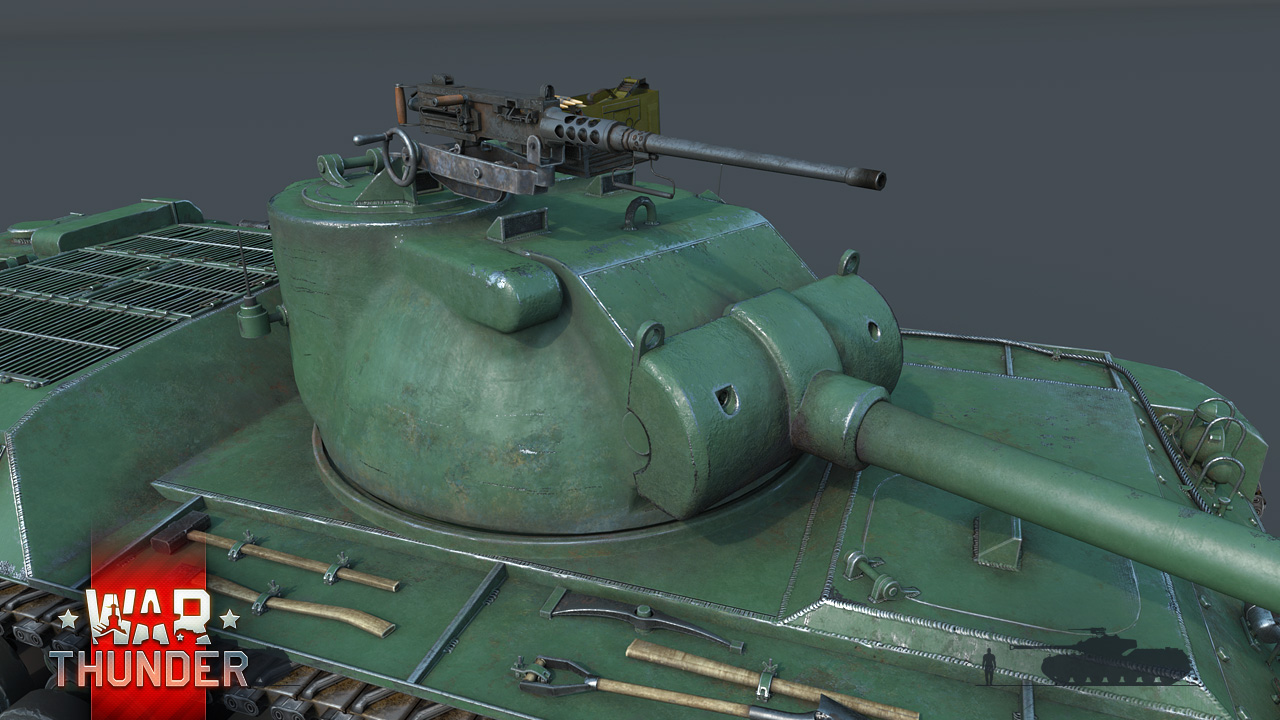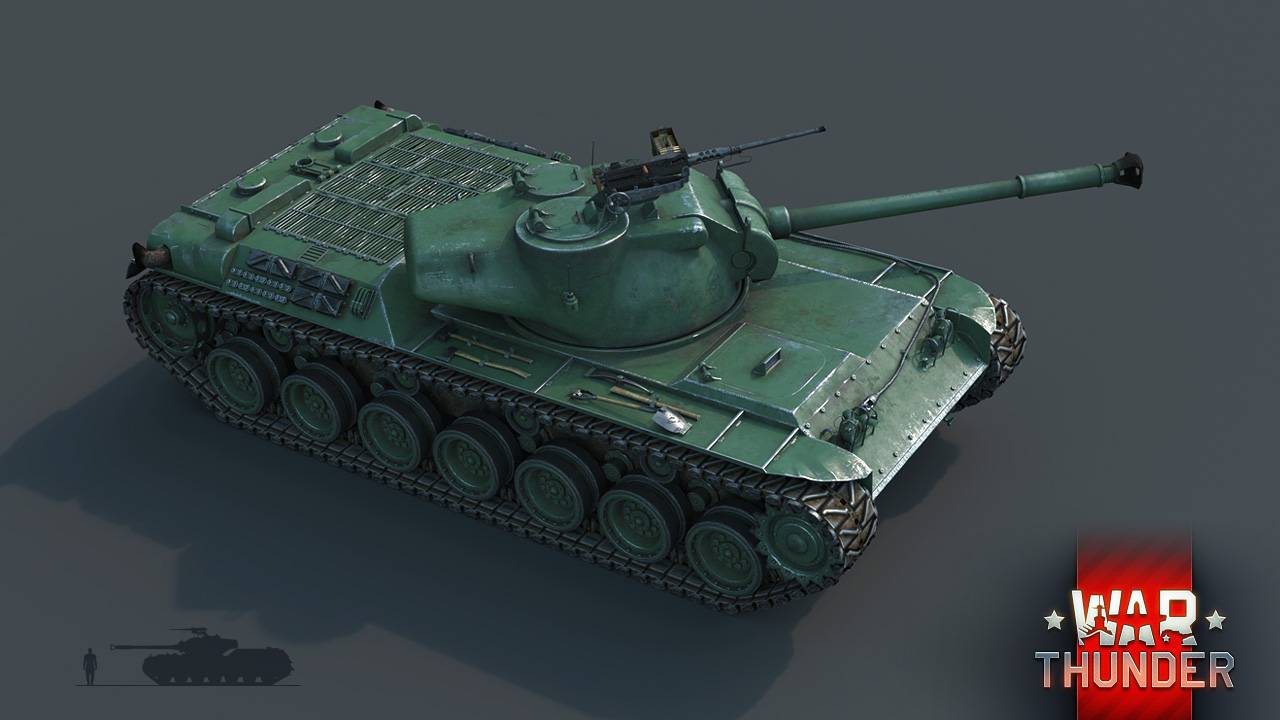
Nov 24, 2016
War Thunder - OrsonES
Pilots, tankers...and aspiring commanders of War Thunder!
War Thunder has been around for some time now...and lot of you significantly helped us with your great feedback and the amount of suggestions we have implemented over the years.
Have you been with us for a long time? Went with us through all the ups and downs, and still appreciate and love the game? Have you spent hundreds or thousands of hours playing War Thunder?
Be a hipster for once! It was YOU who knew this game is cool before it was popular!
Nominate us in the Steam Awards!
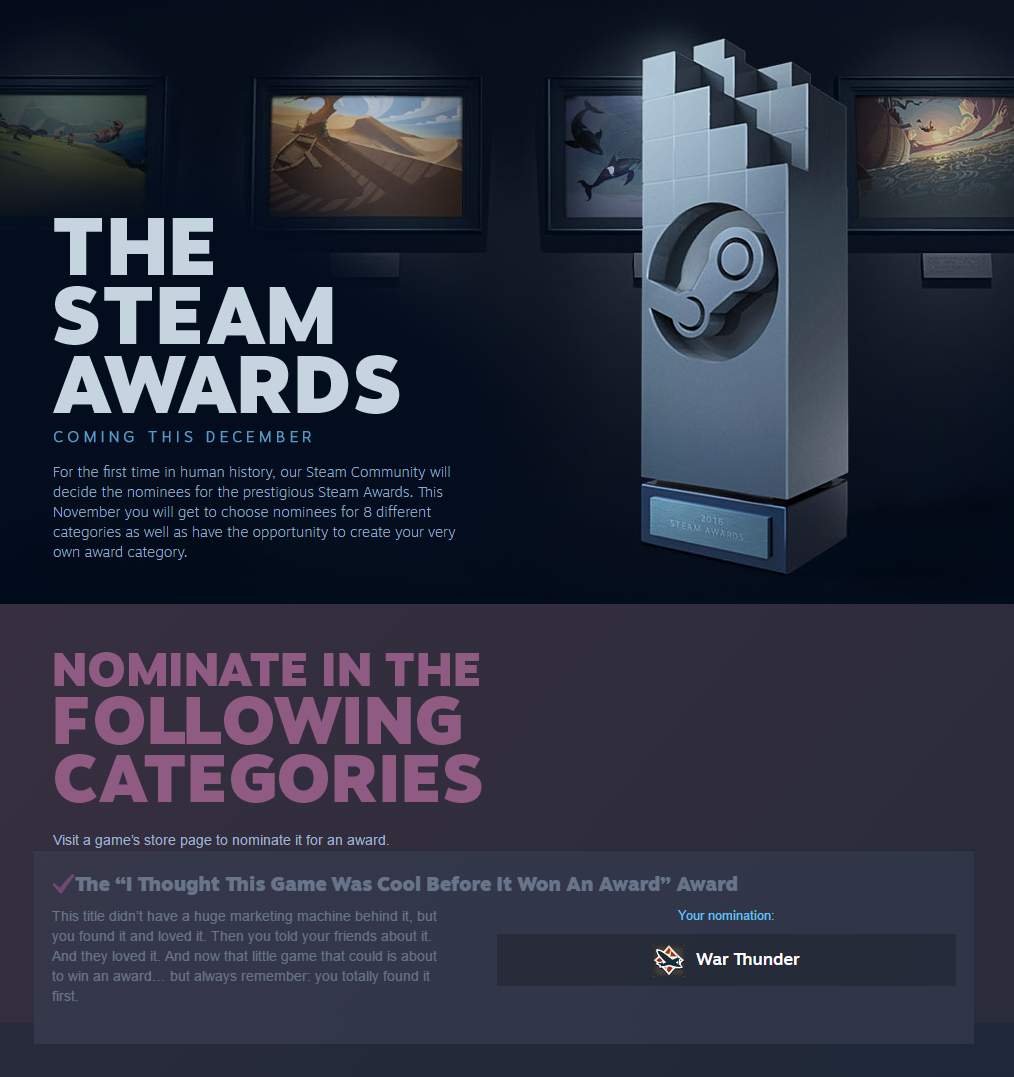
Thank you for your continuous support - we have a lot of plans for upcoming years!
Stay tuned
The War Thunder Team
War Thunder has been around for some time now...and lot of you significantly helped us with your great feedback and the amount of suggestions we have implemented over the years.
Have you been with us for a long time? Went with us through all the ups and downs, and still appreciate and love the game? Have you spent hundreds or thousands of hours playing War Thunder?
Be a hipster for once! It was YOU who knew this game is cool before it was popular!
Nominate us in the Steam Awards!

Thank you for your continuous support - we have a lot of plans for upcoming years!
Stay tuned
The War Thunder Team




